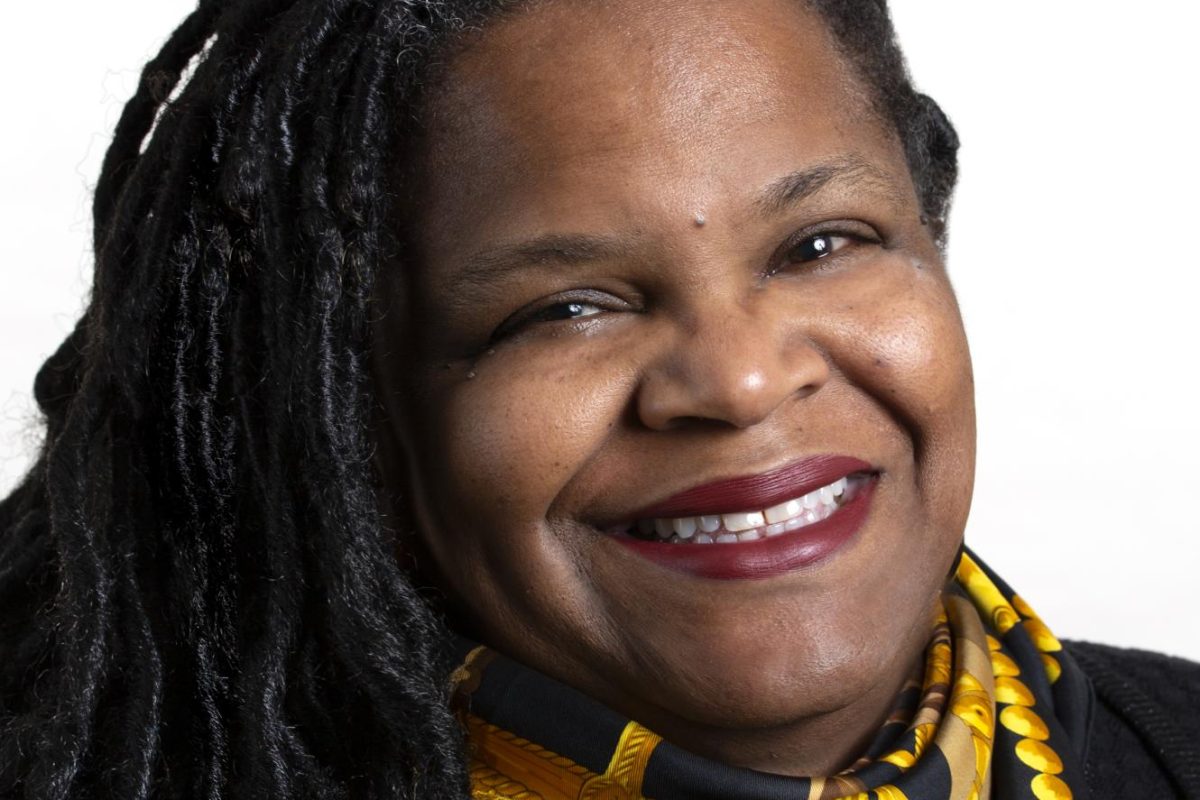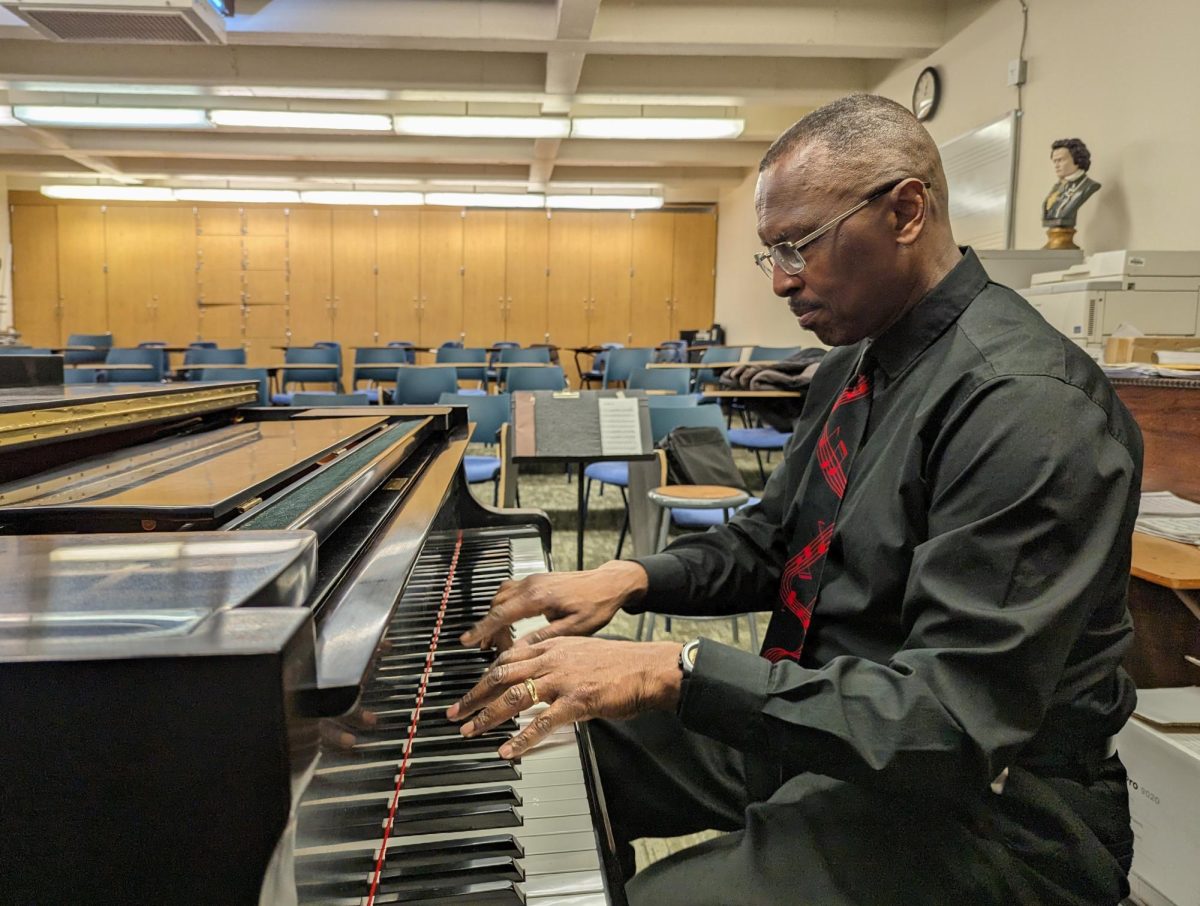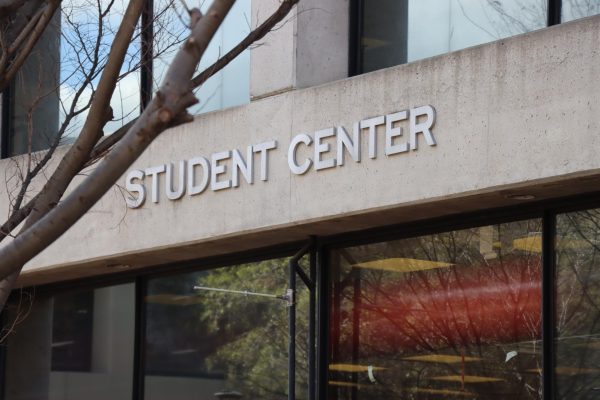
Despite tuition increases, professors and students at Peralta Colleges prepare for purge
When a college experiences a drop in enrollment, it also experiences a drop in funding. A drop in funding forces a college to slash the number of classes it offers.
Because a college is offering fewer classes it will need less faculty. Because a college has fewer classes and fewer teachers its enrollment drops even further.
This is the kind of self-perpetuating spiral that can tear a community college apart.
The major problem facing the Peralta Community College District right now is that enrollment is dropping. In the coming year, Peralta’s enrollment is expected to drop from 19,500 to 18,500.
That drop will result in an approximately $5 million drop in revenue for the district.
That means that Laney’s share of the reduction will be almost $2 million.
STABILITY YEAR
Laney College is in what is known as a stability year.
The State Chancellor’s Office gives colleges that are experiencing a decline in enrollment one year of funding at the same level before lowering their General Apportionment funding, known as a stability year. Thus, for the 2016–2017 school year, Laney will be funded at 2015–2016 level.
This does not mean that Laney will get the same amount of money next year that it got this year. Money from other funds, like the money we receive from the state lottery, for example, will decrease
immediately.
All of these figures are based on the Governor’s January budget proposal and are subject to change when the next budget proposal comes out later this month.
FLAWED MODEL
When funding the Peralta Colleges, the district looks at how much revenue it expects; deducts the cost of district office services, Human Resources, Disabled Students Programs and Services (DSPS), and other centralized services; and finally divides up what is left between the four colleges. Each college receives a portion based on its enrollment.
This is known as the Budget Allocation Model (BAM). This model has some flaws. The more senior faculty a school has, the more it will have to spend of teachers. In Oct. 2015, the district set up a task force to examine and “fine-tune” it.
The Peralta District calculates enrollment by looking at a three-year rolling average of the FTES (Full-Time Equivalent Students).
An FTES can be a single student or a group of part-time students whose combined hours of instruction are equal to those of one full-time student.
The district funds the colleges according to their numbers of FTES. Colleges therefore want as many classes as possible to be “productive.”
A class’s productivity level is calculated by dividing the number of FTES hours by the number of FTEF (Full-time Equivalent Faculty) hours.
For example, a class that has 35 students usually has a 17.5 percent productivity level. When deciding how much money to give a college district, the state assumes that all classes will have a 17.5 percent productivity level.
Not all classes can meet this productivity rate. Classes that have a large number of students are considered to be more productive, but some classes are limited in size because there are a limited number of workstations available. Some classes are capped to avoid overtaxing instructors. English and ESOL classes are limited to 35 students before the semester begins and 30 students afterwards.
‘Fewer faculty’
It is not as simple as having only productive classes.
Laney is known for its vocational programs. Many of these classes are limited in the number of students each class can handle. English and ESOL are essential classes that act as an “on-ramps” for education.
Many other types of classes can’t handle large numbers of students either. When asked how Laney tries to achieve this 17.5 % productivity level, Laney College Vice President of Instruction, Lilia Celhay replied that Laney tries to consolidate the number of sections that are offered around the same time to encourage students into the same classes thus making them fuller and more
productive.
The more large classes taught by one teacher that the college can fill, the better its funding ratio will be.
Peralta Vice Chancellor of Finance Ronald Little explains, “If we’re only generating 18,500 FTES, theoretically we will need fewer faculty to do that, so there will be some cost savings because
we will need fewer part time faculty on board to generate that FTES compared to the 19,500 FTES we have now.”
Task force
 What can be done to combat falling enrollment? Both Laney College and the Peralta College District have plans. Stanley has created an Enrollment Management Task Force. Its first objective is to
What can be done to combat falling enrollment? Both Laney College and the Peralta College District have plans. Stanley has created an Enrollment Management Task Force. Its first objective is toget a feel for what is going on, and then to determine what can be done right now to increase enrollment.
Next, Stanley plans to form an Enrollment Management Committee. Its goal will be to put together a three-to-five-year plan to raise enrollment that will include outreach, retention and many other components.
After it comes up with a plan, the committee will continue to monitor the plan and modify it if it’s not effective. Stanley says, “The proof of the success of the plan will be the rise in enrollment.”
Before she left, the former president of Laney College, Elñora Webb, hired two people on short term contracts to do outreach to bring in more students.
Events like the recent CTE open house, which was attended by more than 700, are important. They give people a chance to see what is available at the college.
Concurrent enrollment and dual enrollment programs may help to bring more students to Laney. There are also programs to support students and encourage at risk students to continue their education.
The Peralta College District is also making plans to raise enrollment district-wide.
Economic downturn
‘Hiring freeze.’ ‘Budget freeze.’ These are phrases that make people stop and take notice.
In these troubled economic times, Laney College’s Interim President Patricia Stanley’s memo detailing a hiring freeze and budget limitation plan was not unusual.
Stanley explained in an interview that since Laney had offered more classes than it had the money for, she had instituted a hiring freeze and a budget restriction plan.
She made it clear that hiring was still going on, but that new employees would start after July 1, the beginning of the new fiscal year, and that any expenses that could wait would be postponed until the new year. This freeze was not asked for by the district.
According to Laney College Business Director Phyllis Carter, the hiring freeze and budget limitation are not expected to have much of an effect except to push some expenses into the next fiscal year.
Any necessary spending will still take place. “We wanted to be more cautious about our spending and see if something was more critical or could wait,” Carter said.
When asked if Laney College or the Peralta College District was having a budget crisis, Little said, “Neither Laney nor the district nor any of the other Peralta Colleges are experiencing a budget crisis.”
He continued by saying that Peralta was preparing for two things, an “imminent economic downturn” and “the fact that our enrollment is not what we had hoped or projected.”
Inflexible budget
Planning the budget for a college or an entire college district is not an easy thing to do.
The governor’s first budget proposal comes out in January, but the numbers usually change. A revised budget will come out in May, but even that budget has to be approved and usually goes through some fine-tuning before that happens.
Making it even harder to know how much money will be available, in Dec. 2016, Prop 30’s one-quarter cent sales tax increase voters approved to fund school districts will expire. The same proposition approved an increased tax rate for high wage earners that will expire in 2018. There will be a vote on whether to extend these increases on the November ballot.
Laney may have some “carry over” money left from Measure B or Prop 30 that could be used to stave off some of the ill effects of the budget crisis, but most of those funds have already been allocated to other projects.
It seems confusing to say that Laney may experience an almost $2 million decrease in the budget because of falling enrollment when we also hear about grants and funds that the college has available and has not fully utilized.
There are two different kinds of funding. Some money is unrestricted while other money is restricted. Unrestricted money can be used for anything a college wants to use them for while restricted money can only be used for the specific purpose it was meant to fund. For instance, even though Laney recently received a large CTE grant and a basic skills grant, these grants can only fund programs to fulfill their specific aims.
According to Little, restricted funds are monitored closely. He explained that it was not possible to use restricted grant funds to supplant unrestricted money already funding programs in the area that received the restricted grant money.
In the governor’s new budget proposal, UCs and CSUs will receive a 5 percent budget increase in unrestricted funds while community colleges will receive a 4.5 percent budget increase, two-thirds of which will be in restricted funds. Little noted that although the governor’s intentions were laudable, “There’s not a lot of flexibility unfortunately.”
Who gets cut?
With everyone thinking about the budget and how to save money, sometimes the best interests of students gets lost. Laney College History/Ethnic Studies Professor Paul Bolick says, “Even more so than the humanities, Ethnic Studies tends to be cut first and continues to be seen as ‘elective.’”
Bolick continued. “When you say, ‘Well, this Asian American course has 15 students when this U.S. history course always has 45, and therefore we’re going to go with the U.S. history course, for [the sake of] productivity,’ the numbers may justify that, but the personal experiences of students would challenge that.”
When deciding what courses to offer economics isn’t the only — or in many instances, the most important — factor to consider.
“Even if you’re a business major or a physicist,” Laney College Ethnic Studies Professor Alicia Caballero-Christensen said, “I want you as a person who’s going to hold power to make decisions in terms of technology to have a good understanding of humanity and have a set of values that is aware of the world you live in and that the decisions you make are going to impact people and the
environment.”
She believes the problems Peralta is having were brought on, at least in part, by a lack of leadership. She explained that a lot more could be done to bring more students in the doors, such as Friday night or Saturday morning classes, free childcare for students in these courses, or tailoring schedules to accommodate these students.
She believes that support for students is essential.
“You can get people in the doors,” she said, “but if they don’t show up the next fall what good did it do?”
When asked why Ethnic Studies should be considered essential rather than elective, she replied, “Taking Ethnic Studies creates an empowering experience for students to continue on in education,
so it’s key for student success and retention, particularly when we think about marginalized students and students of color.
“It helps them develop an analysis of power and deep critical thinking, so they’re prepared to be agents of change no matter career they go into.”




























